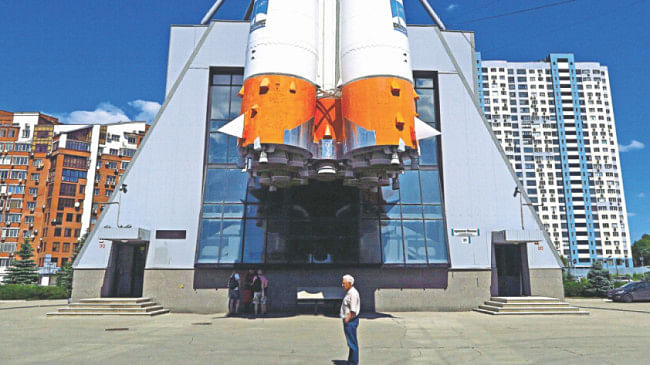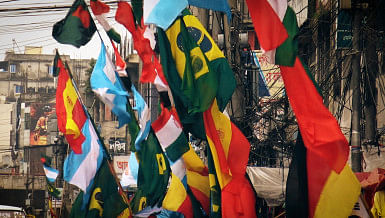Like many other cities in Russia, Samara has a rich history and two of its most historical places have attracted the travelling World Cup fans in droves. On the morning of the Brazil-Mexico match, supporters from both camps turned up in numbers at the Samara Space Museum. As we neared the museum, a real R-7 rocket, firmly fitted on one side of the small but tidy facility, greeted us.
When we entered the facility we came upon an enlightening quote by Konstantin Tsiolkovsky, who is considered as Russia's father of rocket science, paired with an image of the bearded scientist hanging on the wall. And despite our meagre understanding of cosmonautics, the statement struck us the most.
“Earth is the cradle of the mind, but one cannot live in the cradle forever,” read Tsiolkovsky's quote.
However, to get an English version of what else was on display in the galleries, we had to download an app. We then learned that Samara was one of the main hubs of the Soviet Union's space programme. It was here that the 'Vostok rocket', which was the first in mankind's history to reach outer space, was assembled. Hence, it was here that the Soviet Union's prominence in aerospace engineering began.
The museum is dedicated to Sergei Korolev, the lead engineer and rocket designer for the Russian space programme in the space race against America in the 1950s. While being driven to the museum, our taxi driver informed us that they have a factory in Samara which still builds satellites and rockets, but that it is a restricted facility. The radio from Sputnik 1, Earth's first artificial satellite, was also on display but it was the ejection seats and the real space food, including an apple, which attracted tourists the most. After enjoying the wealth knowledge on rocket science, we set off for Stalin's Bunker.
By the time we reached the bunker, which is near the great Volga River, we found ourselves at the back end of a huge queue of Brazilian and Mexican fans. They facility's staff, who were truly struggling to maintain the surprise influx of visitors, said that this was a refreshing sight for them. 30 people at a time can be accommodated inside the Soviet Union era bunker, which was built during the Second World War as a secret hideout for their leader Joseph Stalin, who used the facility as a key strategic platform for their fight against Nazi Germany. Being a journalist has its perks though as we were allowed to enter the bunker, which is goes about 37-meters deep, without standing in line.
As we descended a dimly lit stairwell, the air smelt foul inside the old structure. The thick iron curtain and the giant locks seemed like the stuff of movies, but this was the real deal. Once we reached the ground floor of what could be considered as a 12-story building, the guide proudly announced that the area was safe from even a nuclear bomb. The chamber was a big conference room for Stalin, where his desk and many other personal belongings were also on display. If you want to take a picture wearing a replica of the Russian leader's uniform, you will have to pay 250 rubles. The ground floor is divided into two rooms, the main chamber has a capacity of 115 people while the other was Stalin's personal chamber. The upper levels made up the rooms for guards, technical support staff and storage.
It was truly an unforgettable experience for us.




 For all latest news, follow The Daily Star's Google News channel.
For all latest news, follow The Daily Star's Google News channel. 









Leave your comments